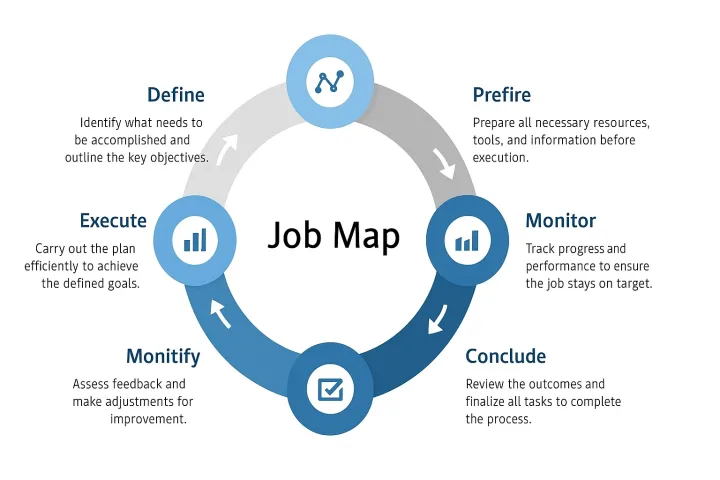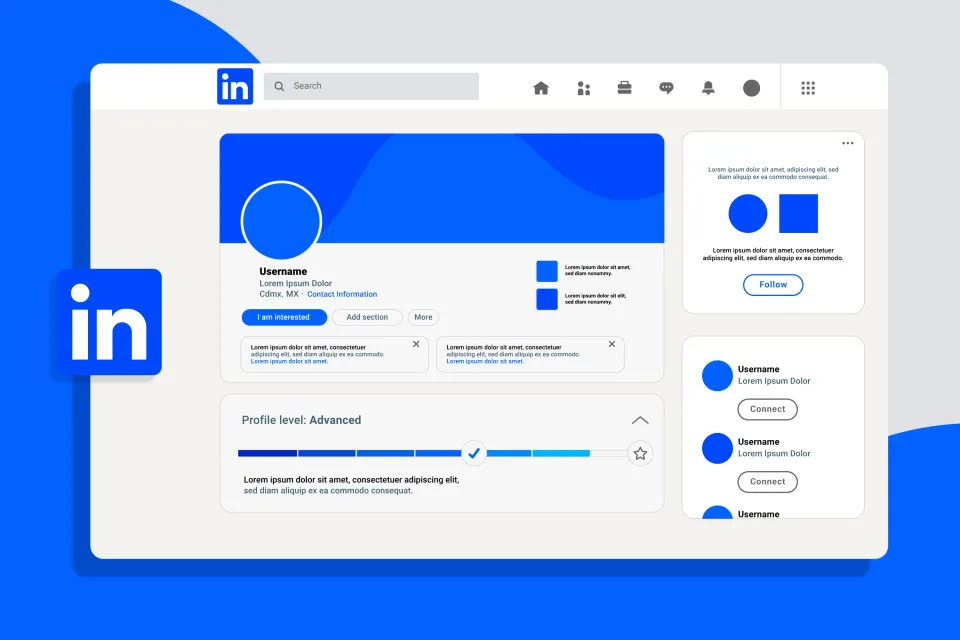In today’s world of digital marketing, getting strong leads is both an art and a science.
Well-designed lead magnets can transform casual website browsers into engaged subscribers, laying the foundation for sustainable growth. Lead magnets are the most significant part of acquiring leads since they provide people with something useful right away in exchange for their contact information.

But not all incentives are the same. Some truly connect with people, while others don’t. This post goes into excellent detail on how to create lead magnets that buyers will genuinely want. It talks about putting value first, meeting user needs, tried-and-true formats for 2025, ways to get your content out there, key performance indicators (KPIs), moral guidelines, and what to do next. Stremeline will show you how to develop lead magnets that make people buy from you and trust you.
Why Value Must Come Before the Form
Lead magnets are most effective when they offer something of real value before asking for something in return. Many marketers position the opt-in form before the offer, which makes people less likely to buy and leads to prospects who aren’t interested.
Effective lead magnets provide people with something useful immediately or help them solve an issue, which allows them to develop a meaningful relationship. Marketing experts design tools that provide consumers with power from the first interaction, which turns their interest into a commitment.
The Psychology of Reciprocity and Early Trust
In his book Influence, Robert Cialdini writes about the psychological principle of giving back. This is how offers work. When you give them something beneficial, like a free guide, tool, or resource, they feel like they have to give you their email or other information in return.
This method builds confidence early on, which is very critical for getting leads. For example, giving up a quick SEO checklist as an incentive could make your company look helpful instead of pushy. Businesses using lead magnets focused on solving real problems have seen opt-in rates increase by 25%, fostering goodwill and reducing perceived risk.
How “Give First” Design Improves Opt-in Quality
The “give first” strategy means displaying how valuable assets are before the form appears. For instance, you could add a sample tip or an interactive demo on the landing page to give people a taste of what they may expect.
This practice gets you better leads that are truly interested, not just those who are clicking through. According to HubSpot’s 2024 statistics, lead magnets that deliver value early on can boost conversion rates by 20% to 30%. Marketing experts test these assumptions by designing landing pages that provide teasers, like a partial checklist or calculator result, speeding up sales funnel progression by 15%.
Mapping Jobs-To-Be-Done (JTBD) to the Right Lead Magnet
The jobs-to-be-done (JTBD) structure, popularized by Clayton Christensen, is key to making lead magnets work. JTBD moves the focus from demographics to behaviors by looking at the tasks or problems that users are “hiring” your product to solve.
Mapping JTBD ensures that lead magnets are useful, relevant, and fascinating, which gets more people to join up. This approach aligns your offer with what customers truly need, increasing its appeal.
Identify the Real Problem Users Are Trying to Solve
First, determine the issues that your audience is facing. Use polls, talk to customers, or look at data to find out what hurts.
“Optimizing ad spend” and “streamlining content workflows” are two common jobs that Streamline’s B2B clients want done. Lead magnets like a “Content Audit Checklist” go straight to the point and make things evident right away.
Don’t make offers that are too broad. Create resources that help with specific issues, like “reducing email bounce rates” for email marketers, instead. This level of accuracy makes lead magnets feel like they are needed, which increases opt-ins.
Connect Asset to Intent Stage (Awareness → Consideration → Action)
Resources work better when they fit the buyer’s journey. A tiered technique helps potential consumers seamlessly, ensuring each offer matches user intent and drives conversions.
- Awareness Stage: Use e-books or infographics to get people interested.
- Consideration Stage: Give people tools, such as ROI calculators or comparison tables, to help them make choices.
- Action Stage: Use demonstrations or trial access as lead magnets to get the deal done.
This strategy ensures lead magnets resonate at every stage, improving engagement by 15%. For example, an ebook on “SEO Basics” attracts awareness-stage users, while a demo drives action-stage conversions.
4 Proven Formats That Still Convert in 2025
AI and personalization are transforming digital marketing, but lead magnets still work as long as they are clear, useful, and simple to follow. Industry data highlights four formats that will continue to convert in 2025.
Checklist → Job-to-be-Done Quick Wins (Clarity in One Glance)

Checklists are a terrific method to get people to sign up for things since they break down major tasks into smaller, easier-to-handle ones. A “Social Media Audit Checklist” can help people find faults with their plan fast.
The Content Marketing Institute (2024) says that shorter lead magnets, like checklists, get up to 40% more individuals to sign up than longer ones. Put your logo on each JTBD list so that they last longer. Let people download them (like a PDF).
Calculator → ROI, Time, or Cost Saved (Tangible Insight)
People prefer calculators that allow interaction because these tools provide personalized information. Users input their ad spending and campaign success, and the program gives them personalized answers, like how much money they’ll make or time they’ll save.
You can perform these things with Google Sheets or make your own apps. According to the Demand Gen Report (2025), interactive lead magnets, like calculators, get four times as many consumers to engage with them as static content. Streamline’s “Ad Spend ROI Calculator” has helped clients show value up front, which has led to a 25% increase in opt-ins.
Template → Ready-to-Ship Format (Reduce Effort Immediately)
Templates are tools that help people save time by giving them ready-made structures for things like email sequences, social media calendars, and ad content. OptinMonster (2024) notes that template-based offers have a 25–35% conversion rate because they’re usable right away.
Ensure the templates are editable (like in Google Docs or Canva) and have clear instructions. Many users have found success with templates like “30-Day Content Plan.” These templates help with things like “streamline content creation,” which is what JTBDs are all about.
Mini-Course → 5 Emails, 5 Micro-Wins (Progressive Engagement)
Mini-courses distributed by email are lead magnets that keep people interested by delivering them value over time. Split them up into 5 to 7 emails, each with a small win, such as “Day 1: Lead Scoring Basics.”
Some reports indicate that email recipients are more likely to open lead magnets that are concise, helpful, and sent regularly. These types of lead magnets are particularly effective for more complex Jobs to Be Done (JTBDs), such as “mastering lead nurturing” and “building trust by consistently providing value.”
Distribution Plan
Even the best lead magnet needs the right audience.
How to Promote Across Owned, Earned, and Paid Channels
The greatest way to get a lot of people to see your lead magnets is to:
- Owned Channels: Promote directly on your blog, website, and email list.
- Earned Media: Pitch guest blogs or work with influencers to get free exposure for your lead magnets.
- Paid Ads: Use sites like Google and LinkedIn to show up for people searching for specific themes, like “best lead generation tools.”
Stremeline Digital Marketing suggests starting with your own products and using sponsored marketing to promote them. A balanced approach ensures exposure doesn’t cost too much.
Align Messaging to Funnel Intent (Don’t Overpromise Value)
Tailor your message to the user’s stage in the funnel:
- Top of Funnel: Broad, informative (“Learn how to get more leads”).
- Bottom of Funnel: Specific and action-driven (“Calculate your ROI now”).
Avoid overpromising; instead, focus on the real value to set realistic expectations. People leave quickly when messages don’t match up. If you make explicit commitments, people will believe you.
Email Delivery + Nurture Sequence Best Practices
To keep things going, send confirmation emails with lead magnets right away. After that, send a series of emails that include:
- A thank-you note
- Advice on how to use the product
- Deals that are related to it
Limit sequences to three to five emails so clients don’t feel overwhelmed. Personalizing emails, such as using the recipient’s name or mentioning their industry, can significantly increase open rates. Sequences that focus on clear actions, like scheduling a consultation, also tend to boost conversions.
KPI Guardrails
You can make sure your lead magnets are working and bringing in profitable leads by checking your KPIs.
Opt-in Quality → Lead-to-MQL Ratio
The lead-to-MQL (marketing-qualified lead) ratio shows how effective the opt-ins are. If the ratio is high (20–30%), it means that lead magnets are bringing in the right people.
Keep track of this ratio using your CRM (such as HubSpot) so you can identify which lead magnets generate strong leads and refine the ones that don’t.
Activation Rate → Downloads vs. Usage Signals
The activation rate tells you how many times a file is downloaded relative to how many times it is really used, such as when you read a PDF or update a template.
If the rates are poor, it could be because the lead magnets don’t match or the directions aren’t clear. Use tools like Google Analytics to see how people are using your site and make it more fun.
Unsubscribe Rate → Detecting Over-Nurture or Misfit Offers
Keep an eye on the unsubscribe rates once they sign up to determine if there are any problems. If your rates are higher than 2%, it could mean that you’re giving too much care or using lead magnets that don’t work.
Use surveys to find out why people stop using your service and what they want. Then, change your offerings to match their needs.
Ethical Guidelines for Modern Lead Gen
There is no place for disagreement when it comes to ethics in lead generation. Trust and transparency are non-negotiable in ethical marketing.
Transparent Value Exchange: What Users Get and When
Tell them what they will get from lead magnets and when, e.g., “Instant PDF download after signup.” Following the GDPR and being open about how you use data makes you more reliable.
A unique value proposition on each offer’s landing page builds trust, resulting in an 8% reduction in opt-out rates.
Avoiding Manipulative Scarcity or Forced Consent
Don’t use fake scarcity (like “Only 5 spots left!”) or forced permission (like checkboxes that are already checked). These approaches hurt trust and potentially even break the law.
Instead, to follow the rules of ethics, utilize actual urgency, such as bonuses that are only available for a short period, and clear consent forms.
Building Long-Term Credibility Through Honest Automation
Be careful while automating lead magnets so you don’t send out spam. Make sure that the information you promised gets to the right people on schedule and that nurture sequences give value instead of noise.

A strategy of honest automation uses offers to establish trust, increasing a company’s reputation and fostering loyalty.
Next Steps
Ready to create lead magnets people genuinely want?
Book a Lead-Gen Audit with Stremeline Digital Marketing.
We’ll help you identify your most important Job To Be Done (JTBD) and design a lead magnet that builds trust and drives conversions.
👉 Visit Stremeline Digital to schedule your audit and start generating high-quality leads today!



